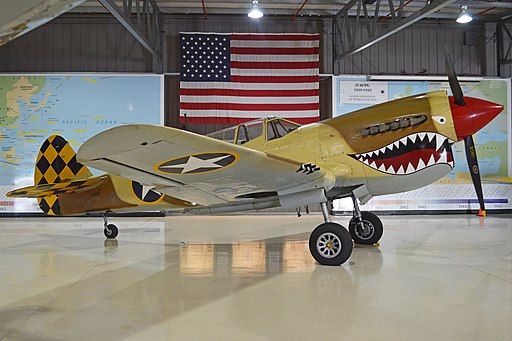The scorching sands of North Africa, historically both a barrier and a bridge between continents, bore witness to a mighty airborne sentinel in the early 1940s. This airborne juggernaut, none other than the P-40, carved its legend into the tapestry of the North African campaign, where it emerged not as the most technologically advanced machine of its time but indeed one that was respected for its ruggedness and relentless effectiveness.
The Curtiss P-40: An Unexpected Hero
Brought to life by the American aviation stalwarts Curtiss, the P-40 was only sometimes the first choice for many air commanders. When pitted against the nimble Bf 109s of the Luftwaffe or the iconic Spitfires of the Royal Air Force, the P-40 was a tad outmatched in certain arenas. Yet, it was not always the agility or speed that mattered, especially when contesting the vast stretches of the Sahara.
Engineered for the Harshest Climes
Why did the P-40 succeed in North Africa, notorious for its erratic winds and searing heat? Well, the reason lies within the aircraft’s design and resilience. Built with an Allison V-1710 liquid-cooled engine, the P-40 had a unique cooling system less susceptible to the abrasive desert sand. Its rugged landing gear, equally equipped to handle both rough desert strips and formal airbases, set it apart.
A Tale of Bravery: The Flying Tigers
While tales of the P-40’s exploits spread across the desert, it’s essential to mention the courageous pilots, such as those of the Flying Tigers, who imprinted the iconic shark-mouthed nose art onto the aircraft. Through a combination of skill, audacity, and the P-40’s dogged reliability, these aviators often made the difference against Axis air power.
The Legacy of the P-40 in North Africa
As Rommel’s Afrika Korps squared off against Montgomery’s Eighth Army, it wasn’t just the tanks that clashed. Above, P-40s tangled with the Luftwaffe in a ferocious ballet of death and defiance. True, it didn’t always emerge victorious, but the P-40’s unique attributes — its endurance, ruggedness, and the sheer tenacity of its pilots — ensured that it was a foe the Axis powers learned to respect if not fear.
Throughout history, the North African campaign stands out as a testing ground for strategies, soldiers, and machines. And amidst the cacophony of engines and the din of battle, the P-40 stands tall. Not because it was the fastest or the most lethal, but because in a theatre of war that tested the limits of man and machine, it proved that sometimes, resilience and adaptability could outshine sheer technical prowess.
The P-40, often overshadowed by its contemporaries, proved in North Africa’s sands that it was more than up for the challenge when tasked with adversity. It indeed was the desert’s unyielding sentinel.
For more insights into the P-40E Warhawk and other important military aircraft, visit Aces In Action. Here, you’ll find an amazing piece of artwork by Craig Tinder titled “Alaskan Tigers,” which depicts General Chennault’s son, Col. John ‘Jack’ Chennault, protecting the Aleutian Islands from Japanese invasion. The limited edition canvas print even includes a piece of intake fragment discovered nearly 40 km from Murmansk, Russia on the western side of Kola Bay, making it a unique piece of history!
Alaskan Tigers – P-40 Warhawk Fighter Aviation Art by Artist Craig Tinder
The P-40’s legacy is closely coupled with General Claire Lee Chennault’s American Volunteer Group (AVG), otherwise known as the Flying Tigers. Chennault trained his crews to exploit the strengths of the P-40 to fight the Japanese – dive from high altitudes and attack. General Chennault’s son, Col. John ‘Jack’ Chennault would use many of the same tactics while protecting Alaska’s Aleutian Islands from Japanese invasion. Painted in a modified “shark-mouth” paint scheme, the 343rd Pursuit Group would defend the U.S. mainland from attack from mid-1942 to fall 1943.





Share:
The Ten Deadliest Fighter Aircraft of World War II
The Stearman Bi-plane: A Symbol of WWII Aviation